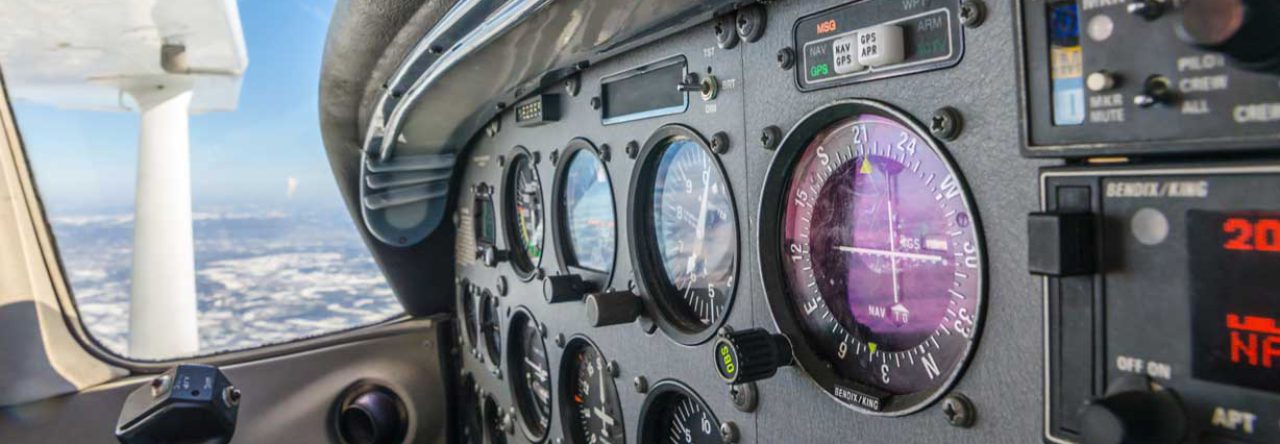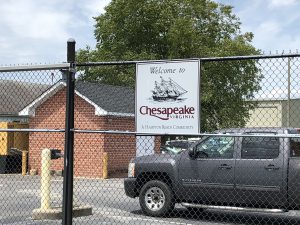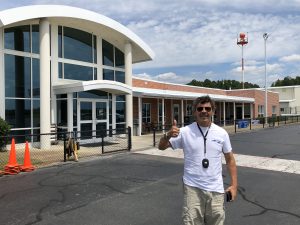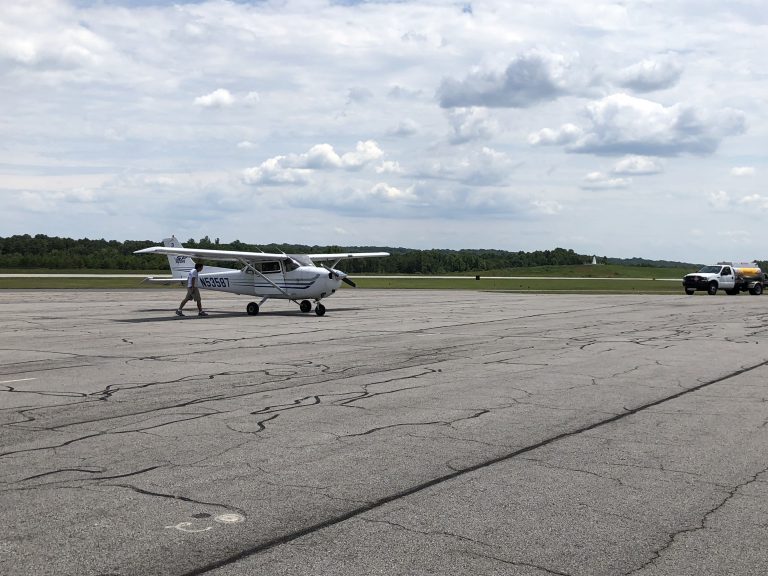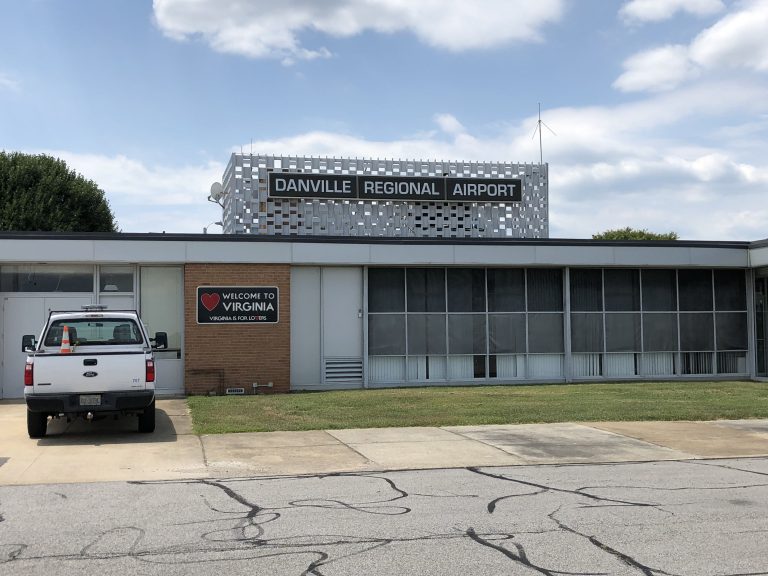Disclaimer: Maneuvers discussed in this post are for training purposes only! Do not attempt without the assistance of an experienced and qualified instrument instructor.
I have been focusing on my cross country time building lately. Time to get back in the cockpit with my instructor. As the title says, Das radio kaputt!! Today’s lessons were about emergencies.
I had a feeling something was up when my instructor texted me that I need to plan a flight to Siler City (KSCR) and that I needed to plan an alternate because the weather at TTA was zero zero. The translation here is that the airfield is completely weathered in, ceilings of zero ft and visibility of zero ft. Think of thick fog. I am sitting next to a window, staring at the clear blue sky thinking my instructor has cracked. Not really, I figured it was a *hint* *hint*.
I remember us discussing early in my training, one day I would perform a take-off with foggles on and also do a zero/zero landing with foggles on.
This is not something that you want to ever have to do. The idea is to prove that if you are ever faced with dire circumstances, this is a tool in your bag that could potentially save your life.
It wasn’t all peachy, as I said before, today was about emergencies. I am also getting to the phase in my training where I should be tightening things up. Today proved I still have a little ways to go.
During the run-up, I was trying to get back in the groove, setting the radios, testing the autopilot, etc. During the autopilot disconnect testing, I got two of the disconnect methods:
- Turn off the autopilot from the autopilot itself
- Disconnect button on the yoke
I missed the other two methods:
- Trim switch will disengage
- AutoPilot circuit breaker
I didn’t take this too hard, I have never really used the autopilot and the last time I fully tested it was my first lesson. However today we were going to use it, so it must be tested.
Before take-off, I finished setting up the radios, flight plan KTTA-KSCR (More on this), run-up, etc.
I wrote C-R-A-F-T on my kneeboard in anticipation of getting my mock clearance and then I muttered something like, “Well, I guess I can taxi to 21 before getting the clearance in case it is an immediate departure clearance”. Teachable moment coming.
Once I taxi’d to Runway 21, I then confidently announced. ” ********* approach, 72675 would like to pick up my clearance”. “uh, 72675, where are you?” Doh, I needed to say that I was TTA and positioned to take of runway 21. After this reminder I completed the query. “Ok, 72675, stand-by” Teachable moment coming!
My instructor then says “Well, they put you on hold for a bit, as they do, and now about 10 airplanes lined up behind us waiting to take off” I should have gotten my clearance on the ramp and not wait until I was ready to depart. These are all good nuggets and will become more engrained as I fly in the system more often.
“72675, cleared to LIB VOR, Altitude 3000, stay on ***** approach frequency, squawk 1200, current time 1645, Clearance void by 1647, call me back if not off by 1649”
I read back the clearance and then made a mistake because I was a little crunched on time to get lined up on the runway for a foggles on, zero/zero take-off. I imagine my instructor did this on purpose as well. Previously, I configured the GPS for KTTA-KSCR not KTTA to LIB VOR. Once I departed runway 21, I then realized, I have no idea what my course is and quickly started fumbling with the gps. In a turn no less. I overshot the course by about 45 degrees. I hear my instructor, “Uh 72675, where are you headed?” What I should have done is turned to a point North westerly then configured the gps course. Trying to do it in a turn was too much load on my brain.
Once on course, I hear my instructor doing his best garbled transmission play acting. It took 2 or 3 times before I responded and then we walked through what to do. I was able to slowly work through possible solutions:
- Try my other radio, nothing but static
- Key the mic and see if others can hear me to relay, nothing but static
- Switch to another approach frequency, nothing but static
- change to guard channel 121.5, nothing but static
Now this is where we follow lost comms procedures. At this point I feel a little bit like this guy:
We were only cleared to LIB VOR. So we have to hold there until our expected arrival time. We take our departure time and then add our enroute time to the destination and that will be the time in which we can leave the hold once we reach LIB VOR. As we neared, it was apparent that we would arrive to the VOR after this expected time, so we can perform the procedure turn and then begin inbound to land at KSCR.
As I neared the Circle to land minimums, I goofed by trying to fly the missed too early. Another good lesson, fly the minimums until you reach the airfield, because the clouds could clear up right when you arrive. Anyway, back on the missed I turned toward the LIB VOR and we discussed the sector minimum altitude since I am not on an airway. I blew this at first as well because I wasn’t paying attention to which side of the airfield I was located. Another good lesson.
We discussed, well, what next? We filed alternate at RDU but it looks socked in and TTA is improving, so we load up the RNAV 21 approach with OZOPE IAF and I turn back toward TTA. At this point, I ask questions about being predictable to ATC. They already know we are lost comms since we are squawking 7600. They are busy clearing airspace around us as we move so it is important to be predictable.
Amazingly, the radios come back and I get a lesson on how the autopilot works. We set up for a coupled RNAV 21 approach. Honestly, I spent the whole time trying to second guess the autopilot, but it was nice to have free hands and a little head room to focus on getting the approach ready.
Once we are pointed at our final approach fix, my instructor says, “Hmmm, no LPV, LNAV only, that’s odd”. With no glideslope, I would need to perform the stepdowns using the autopilots altitude control. No riding down the glideslope for free. This was good practice on how to get stepped down and still using the autopilot to help out.
At about 2 miles out, I disconnected the autopilot, flew to minimums and then performed a touch and go.
Once back in the air, I was given vectors back to the RNAV 21 final approach fix at WIZNY. Magically, LPV was now working again. Without going into detail, my instructor disabled WAAS before I loaded my previous approach and enabled during the middle of said approach. However, in order to get LPV back, you need to resequence the approach. Once we added the RNAV 21 back into the gps, LPV was working again. Another good lesson because you never know what the previous pilot may have done or previous instructor… or your current instructor!
Now the fun begins. The moment of truth. Am I ready?
I am on the glidepath for a zero/zero landing on Runway 21. I slow the airplane to 70 and drop 10 degrees of flaps. This configuration would take me to the promised land.
I was hyper focused on keeping the vertical and horizontal lines on the CDI perfectly on target. There was some drift left and right but not too bad. I got a little low on the vertical and compensated by being a little bit high. That is better than low but need to keep it close
I wasn’t nervous but really sweaty!
We neared the runway, I am holding the vertical and horizontal needles on the CDI in the middle. We are now nearing the touchdown altitude of 230. At around 245 on the altimeter, I begin the round out and hold level….. holding …. holding…. holding, then I feel the wheels touch down. OMG! We are on the runway. Looking up from my foggles, we are about 10-15 feet left of centerline but safely on the runway! I did it! It was a crazy cool feeling that I was able to make this happen fully under the foggles. I didn’t peek, it was a complete surprise. Honestly, one of my better landings with my instructor on board, lol.
As we taxi’d back, I was on cloud nine. I had so much to unpack on this lesson, that I needed to wait a few hours and dump my thoughts into this blog. To be sure, I missed some details but hit the big lessons for today.
I don’t ever want to be in an emergency situation where I would have to land in zero/zero conditions but it is good to know that I do have the capability and it could potentially be a life saving tool.
